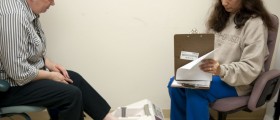
Postmenstrual hormone therapy is a commonly prescribed medical treatment associated with various risks and benefits. Getting enough information about this treatment is one of the most important decisions a woman should take. The goal of this treatment is to provide a relief from discomforting symptoms associated with menopause. Hormone replacement therapy should substitute the diminishing female hormones such as estrogen and progesterone. Sometimes, testosterone may also be included. Therapy is commonly delivered in different dosages, by the use of patches, tablets, creams, troches, IUDs, vaginal rings, gels or, more rarely, by injection. The therapy is typically given as a short-term relief from menopausal symptoms, usually less than five years.
Understanding menopause
In most of the women, menopause starts anywhere between 45 and 55 years of age, when their ovaries stop producing eggs and their menstrual periods finally diminish. The changes in the woman’s body are developing gradually, over a course of a couple of years. This stage in women’s life is known as the menopausal tension, and it is characterized by the drastic decrease in the production of estrogen. Since the estrogen levels drop for more than 90%, women typically experience many unpleasant symptoms of the hormonal misbalance, such as vaginal dryness, hot flashes, excessive sweating, increased stress, forgetfulness, mood changes and health problems involving osteoporosis or heart disease.
Benefits and side effects of postmenstrual hormone therapy
Postmenstrual hormone therapy involves administration of estrogen and progestin, in order to relieve inconvenient symptoms of menopause. Hormone replacement therapy may be effective at reversing the effects of aging on the muscles.
On the other hand, the estrogen may trigger the overgrowth of the cells in the lining of the uterus, which can lead to uterine cancer. Progestin is added to estrogen to prevent this from happening. However, estrogen and progestin in combination increase the women’s risk of heart attacks, breast cancer, blood clots and strokes. Women who become menopausal more than 10 years before starting hormonal therapy, or over age 60 years of age, are at an increased risk of having a heart attack related to hormone therapy.
The risk of osteoporotic fracture is lower in women who take estrogen-progestin or estrogen alone, but this treatment offers only mild protection against osteoporosis and colorectal cancer.
The postmenstrual hormone therapy can also increase the woman's risk of developing dementia, especially if the treatment starts many years after the menopause. On the other hand, certain studies show that estrogen treatment helps to improve the mood and decrease depression. Some women have completely recovered from depression that started in a first couple of years leading up to menopause.

















Your thoughts on this
Loading...